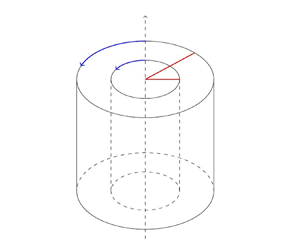No CrossRef data available.
Article contents
Liouville-type theorems for the Taylor–Couette–Poiseuille flow of the stationary Navier–Stokes equations
Published online by Cambridge University Press: 29 July 2024
Abstract

We study the stationary Navier–Stokes equations in the region between two rotating concentric cylinders. We first prove that, for a small Reynolds number, if the fluid flow is axisymmetric and if its velocity is sufficiently small in the  $L^\infty$-norm, then it is necessarily the Taylor–Couette–Poiseuille flow. If, in addition, the associated pressure is bounded or periodic in the
$L^\infty$-norm, then it is necessarily the Taylor–Couette–Poiseuille flow. If, in addition, the associated pressure is bounded or periodic in the  $z$ axis, then it coincides with the well-known canonical Taylor–Couette flow. We discuss the relation between uniqueness and stability of such a flow in terms of the Taylor number in the case of narrow gap of two cylinders. The investigation in comparison with two Reynolds numbers based on inner and outer cylinder rotational velocities is also conducted. Next, we give a certain bound of the Reynolds number and the
$z$ axis, then it coincides with the well-known canonical Taylor–Couette flow. We discuss the relation between uniqueness and stability of such a flow in terms of the Taylor number in the case of narrow gap of two cylinders. The investigation in comparison with two Reynolds numbers based on inner and outer cylinder rotational velocities is also conducted. Next, we give a certain bound of the Reynolds number and the  $L^\infty$-norm of the velocity such that the fluid is, indeed, necessarily axisymmetric. As a result, it is clarified that smallness of Reynolds number of the fluid in the two rotating concentric cylinders governs both axisymmetry and the Taylor–Couette–Poiseuille flow with the exact form of the pressure.
$L^\infty$-norm of the velocity such that the fluid is, indeed, necessarily axisymmetric. As a result, it is clarified that smallness of Reynolds number of the fluid in the two rotating concentric cylinders governs both axisymmetry and the Taylor–Couette–Poiseuille flow with the exact form of the pressure.
- Type
- JFM Papers
- Information
- Copyright
- © The Author(s), 2024. Published by Cambridge University Press





